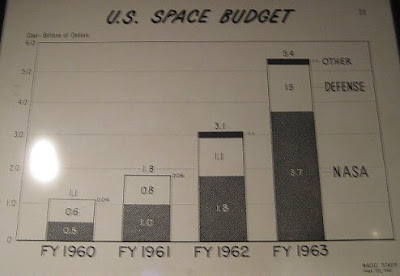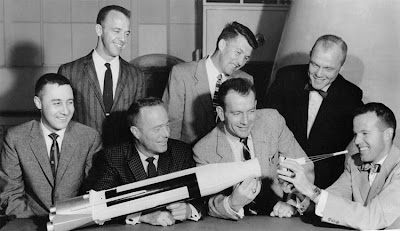America's first Astronauts, the "Mercury Seven" were chosen 50 years ago today, on April 2, 1959.
Left to right: Virgil "Gus" Grissom, Alan Shepard, Scott Carpenter, Walter Schirra, Donald "Deke" Slayton, John Glenn & Gordon Cooper inspecting a Mercury model on at NASA Langley Research Center in April 1959.
On October 7, 1958, the new National Aeronautics and Space Administration announced
Project Mercury, its first major enterprise. At the time, it was unknown if manned crafts could orbit Earth – or what the effects would be on any human who attempted such a thing.
At a press conference in Washington DC on April 9, NASA introduced the Mercury Seven to the public. These were the best of the best, the educated test pilots who had passed all the physical and mental screenings estimated to gauge possible space travelers. The men were dubbed "astronauts," a term deriving from the Greek words
ástron (meaning
star) and
nautes (
sailor).
Each man successfully flew in
Project Mercury except Slayton, who was found to have a heart condition – though he later flew on the Apollo Soyuz Project. The goals for Mercury were as follows:
- Orbit a manned spacecraft around Earth
- Investigate man's ability to function in space
- Recover both man and spacecraft safely
Over a 5-year period, NASA achieved all these with 8 automated and 6 manned flights before Mercury wrapped in May of 1963. The missions paved the way for Gemini and Apollo, as well as all further human spaceflight. Parts of their story were immortalized in a 1979 book and 1983 film, both entitled "
The Right Stuff."
 NASA’s budget during the Mercury years
NASA’s budget during the Mercury years
(click to enlarge)





































































